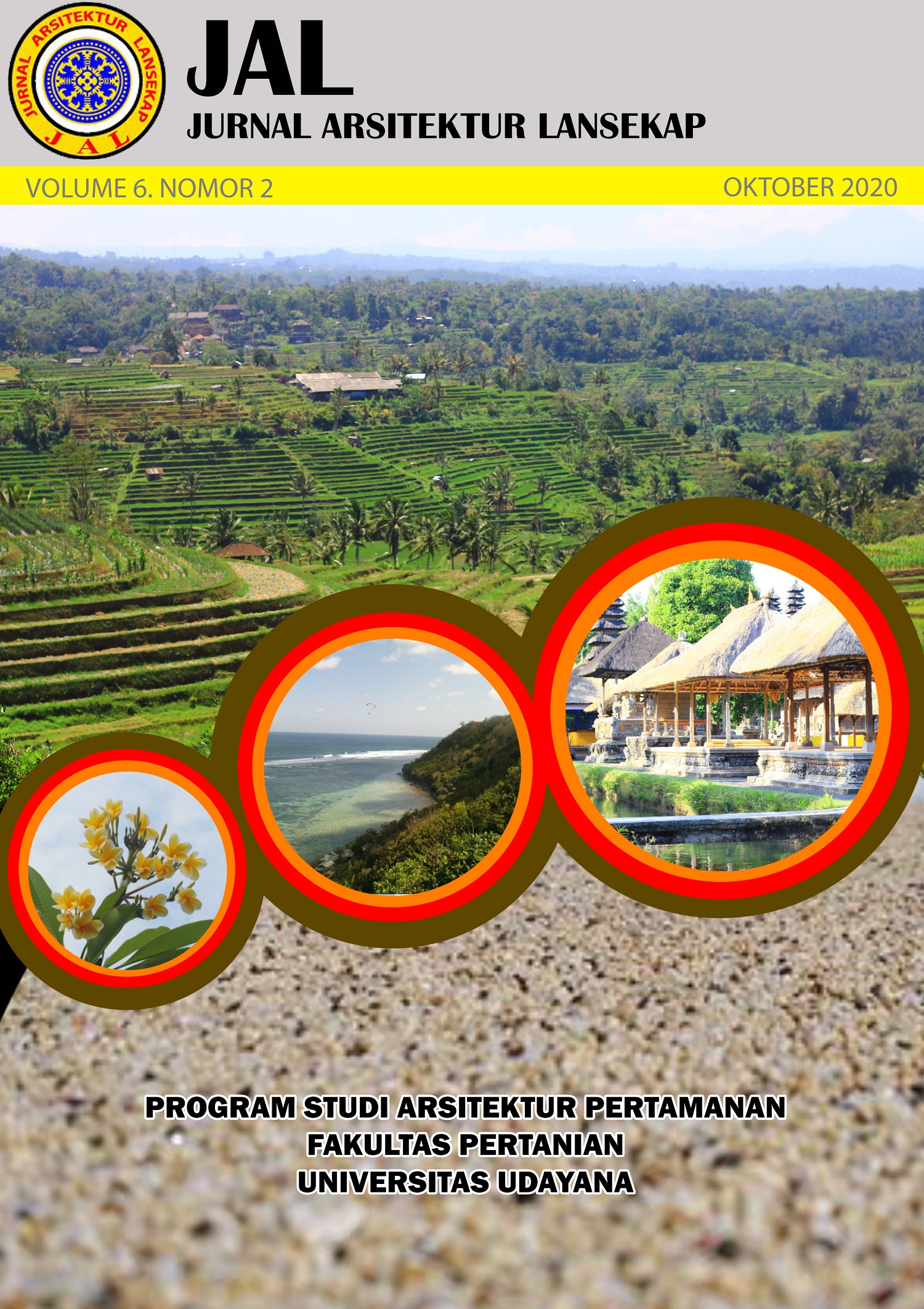Studi ruang rumah tinggal masyarakat Bali Katolik di Desa Canggu
Abstract
Study of residential space of the Catholic Bali Community at the Canggu Village. Balinese culture is a complex phenomenon based on various beliefs such as Hinduism, Shiva, Buddhism and combined with ancestral traditions therefore that Bali has a special uniqueness of the ceremonial activities performed and the architecture of the building. Over time, the many interactions that enter Bali cause interactions between communities, resulting in friction between cultures which allows acculturation to occur. One of the cultural meetings that took place in Bali was the existence of a Balinese Catholic community in Canggu Village, North Kuta District, Badung Regency, Bali. Cultural meetings that take place in this village involve Balinese Hindu culture and Catholic traditions. The purpose of this study is to study the picture of cultural encounters that occur in the pattern of Catholic Balinese residences in Canggu Village. The results obtained are that the laying of each building does not consist of one building such as a traditional Balinese house, but does not adapt to the space of the mandala, at a level that adapts the concept of the tri mandala all facing towards the main road.
Downloads
References
Anonim. (2011).Perjalanan Hidup Iman Umat Katolik Proki Roh Kudus Babakan. Canggu: Tidak diterbitkan.
Bappeda Tingkat I Bali dan Universitas Udayana.(1982). Pengembangan Arsitektur Tradisional Bali untuk Keserasian Alam Lingkungan, Sikap Hidup, Tradisi dan Teknologi. Denpasar: Bappeda Tingkat I Bali.
Budihardjo, E. (1998). Percikan Msalah Arsitektur Perumahan Perkotaan. Yogyakarta: Gadjah Mada University Press.
Koentjaraningrat. (2002). Pengantar Ilmu Antropologi. Jakarta: PT. Rineka Cipta.
Srisadono, Y. D. (2012). Melintas: Konsep Sacred Space dalam Arsitektur Gereja Katolik. Bandung: Depertement of Architecture Parahyangan Catholic University.
An author who publishes in the Jurnal Arsitektur Lansekap (JAL) agrees to the following terms:
- Author retains the copyright and grants the journal the right of first publication of the work simultaneously licensed under the Creative Commons Attribution-ShareAlike 4.0 License that allows others to share the work with an acknowledgement of the work's authorship and initial publication in this journal
- Author is able to enter into separate, additional contractual arrangements for the non-exclusive distribution of the journal's published version of the work (e.g., post it to an institutional repository or publish it in a book) with the acknowledgement of its initial publication in this journal.
- Author is permitted and encouraged to post his/her work online (e.g., in institutional repositories or on their website) prior to and during the submission process, as it can lead to productive exchanges, as well as earlier and greater citation of the published work (See The Effect of Open Access).
Read more about the Creative Commons Attribution-ShareAlike 4.0 Licence here: https://creativecommons.org/licenses/by-sa/4.0/.







